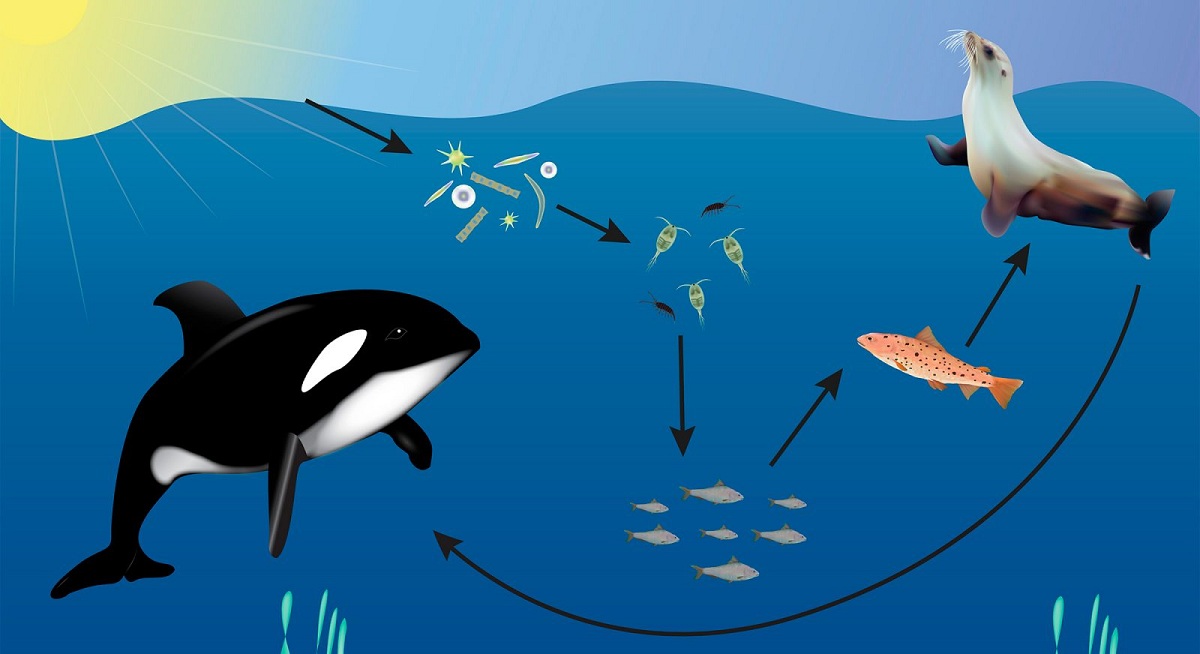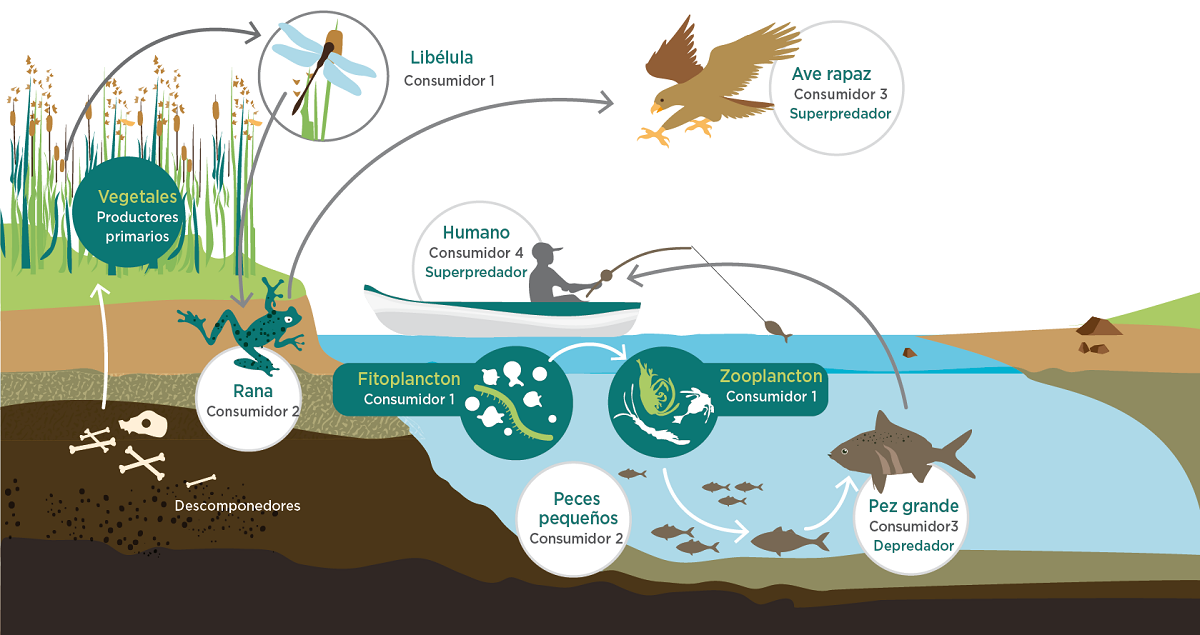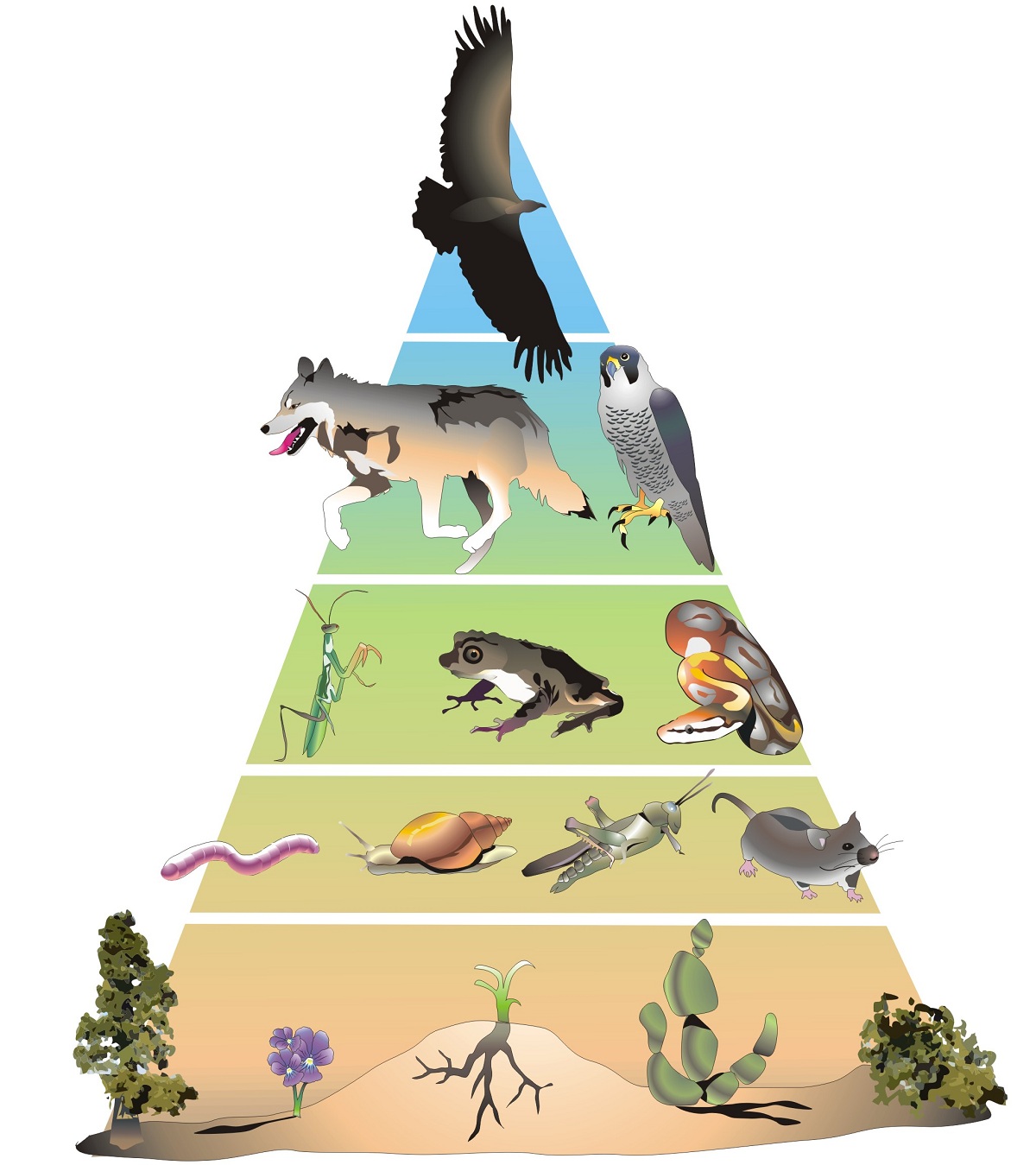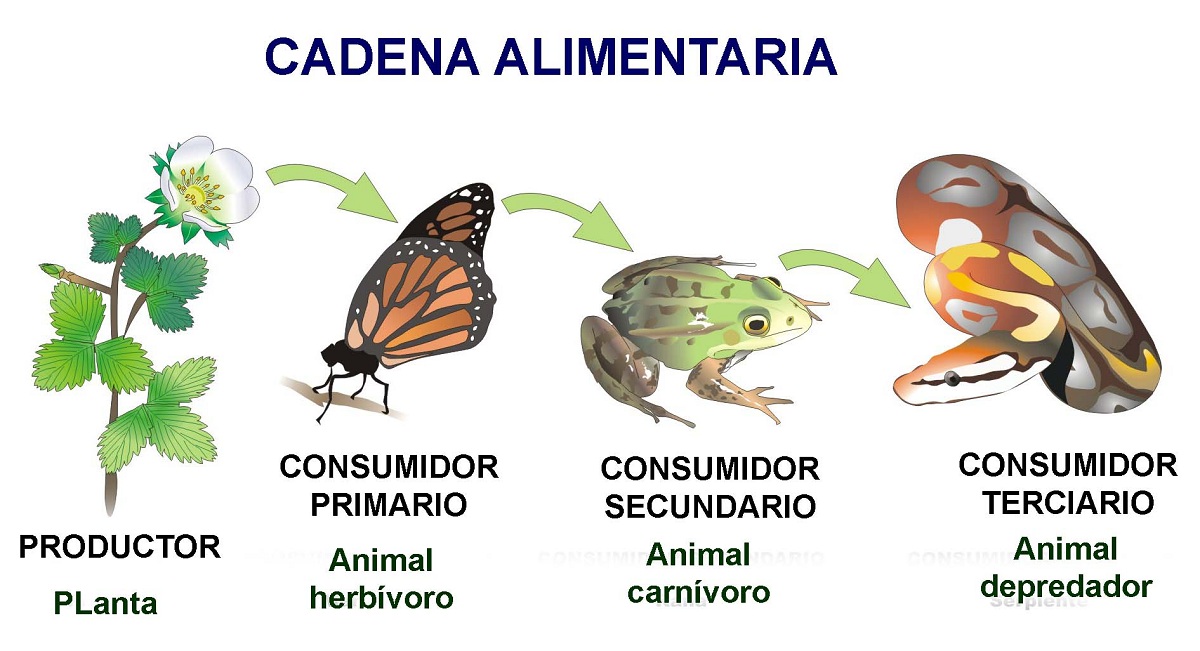
In all natural ecosystems there is an ecological balance and a flow of energy between the physical environment and living beings. It is known as food chain, food chain or food chain to this mechanism of transfer of organic matter and energy through the different species of living beings that make up a biological community or ecosystem. This makes the food chain become one of the most important elements of ecosystems for their survival and development.
Therefore, we are going to dedicate this article to tell you all the characteristics, importance and types of the food chain.
Key features
It must be taken into account that all biological communities are made up of different forms of life. The different living beings that inhabit an ecosystem are related to each other and to their physical environment. This means that they had to share a habitat and compete to survive and reproduce. Food is one of the main factors for the survival of the species. Therefore, there are some living beings that they feed on vegetation, others are predators and other scavengers. The entire circuit that usually includes the survival of living beings through the exchange of organic matter considered as nutrients and energy obtained from this exchange of organic matter is understood as a trophic chain.
The food chain is made up of different links depending on the type of function that each living being fulfills. In this way, we can speak of producers, consumers and decomposers within a food chain. Let's see what are the different functions that living beings fulfill in a food chain:
- Producers: they are responsible for nourishing the rest of living beings using inorganic matter and a source of energy such as sunlight for their own development. For example, through photosynthesis, plants can absorb nutrients. Plants serve as food for other living things.
- Consumidores: they are those that feed on the organic matter of other living beings. These living beings can be producers or other consumers. In this case, they would act as predators. Depending on the case, we can call consumers as primary and secondary.
- Decomposers: They are those that are responsible for consuming decomposing organic matter to reduce it to its most elemental components. These decomposers are mainly fungi, insect bacteria that are present in ecosystems.
Food chain

It must be taken into account that in order to reach the final consumer, there is a portion of heat in the transmission of matter. Each link in the food chain or levels is a cycle that maintains a certain balance. The problem of the food chain is the human being. The interference of the human being or some type of natural accident causes an imbalance in the food chain that is capable of extinguishing the species. They are also capable of generating long-term ecological damage.
The most naturally occurring impacts on the food chain of an ecosystem are due to invasive species. These species are the ones that displace local species. It can also happen when some type of key predator is extinguished to prevent the disorderly proliferation of other smaller species. In the case of humans, the decline in the populations of the Iberian wolf is causing the proliferation of rabbits. These rabbits are the ones that cause crop damage.
There are food chains in which a percentage of energy is lost as it passes from one link to another. This is the most common. Therefore, when the final link of the consumer is reached, a significant part of the transmission of matter has been lost. In return, chemical energy is transformed from one tissue to another. The wolf does not eat grass, but it does eat rabbits which in turn eat grass. The energy of the grass reached the wolf in a transformed form. Although it has lost some of its energy along the way, in the end the wolf ingests its properties.
Types of food chain

We are going to point out which are the main types of food chain that exist. According to the habitat in which they take place, we can speak of two types of trophic chains:
- Terrestrial food chains: They are those that take place in areas of the continental shelf. They can also occur under the earth's surface. For example, we find the trophic calderas of the desert, tropical forest, etc.
- Aquatic food chains: are those that occur in marine or lake environments. They are normally made up of creatures that have adapted to aquatic life. Submarine areas can also be found where a food chain develops. Coastal zones and abyssal zones also belong to the aquatic ones.
The trophic levels are those that indicate the different parts in the production and exchange of matter. Each rung of the food chain is known as a trophic level. The different species that are responsible for sharing a nutritional activity and a mode of nutrition are those that occupy the entire food circuit of an ecosystem.
This means that the different trophic levels can be the following:
- Producers: are those forms of life that can be nurtured in an autotrophic way. This means that they are able to synthesize their own food.
- Consumers: they are those living and heterotrophic beings that must consume organic matter to nourish themselves. They are divided into the following 4 rungs: primary, secondary, tertiary and quaternary. The primary ones are those herbivores that feed on the producers. The secondary ones are those that feed on other primary consumers but are small predators. Tertiaries are larger predators that prey on secondary consumers. Or Quaternaries are those that are large predators that feed on tertiary or secondary consumers and do not have natural predators.
- Decomposers: it can be said that it is nature's recycling department. It feeds on waste and decomposing organic matter. This helps reduce matter to its most basic materials. Other names for decomposers are detritophages and saprophages.
I hope that with this information you can learn more about the food chain and its importance for ecosystems.
